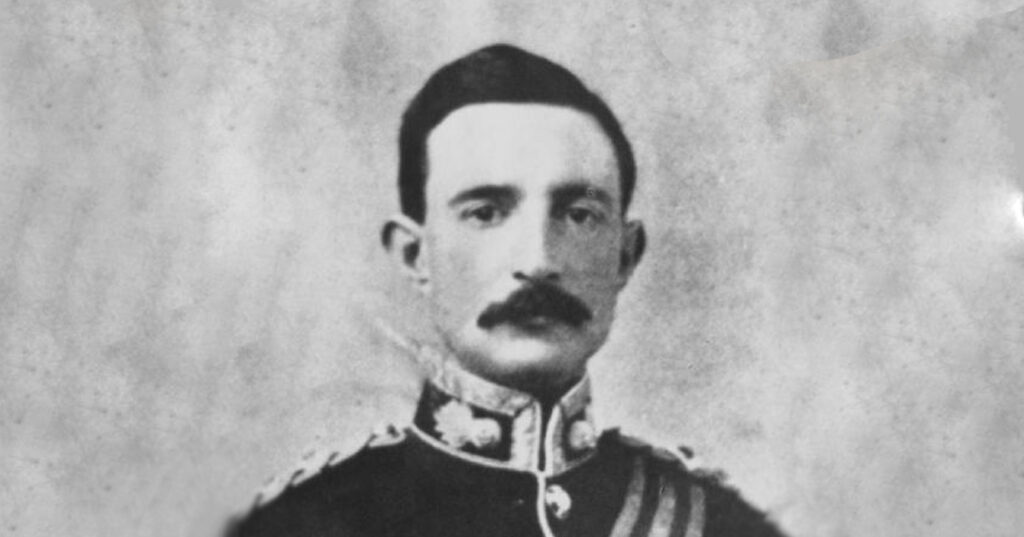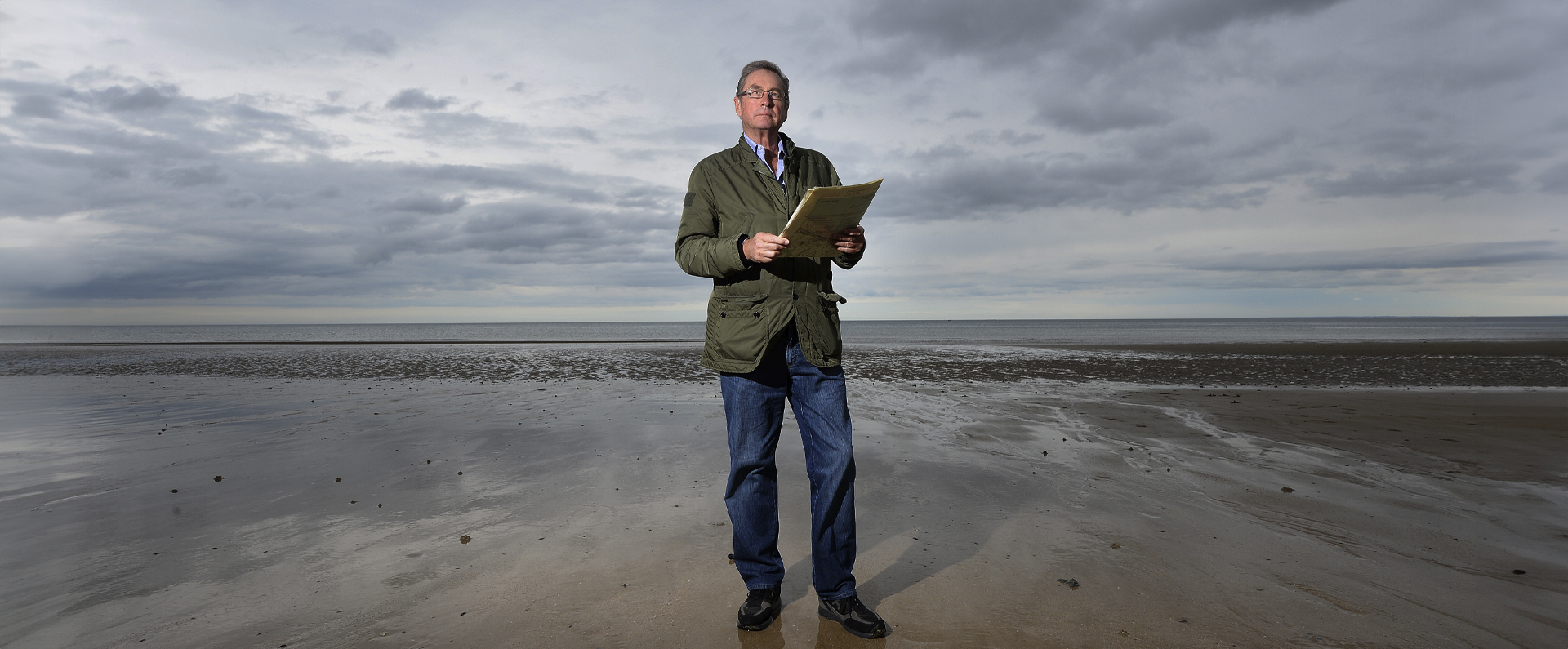
Published in Britain at War March 2014.
Brigadier General Charles FitzClarence VC
During the Siege of Mafeking in the Second Boer War, Captain (later Brigadier General) Charles FitzClarence showed outstanding bravery on at least three occasions. In the latest article in his “Hero of the Month” series, Lord Ashcroft tells the story of a remarkable military career.
Charles FitzClarence was a brilliant soldier and leader of men who distinguished himself during two major conflicts: the Second Boer War of 1899-1902 and the Great War of 1914-8. By the outbreak of the First World War, he was approaching 50 years old and still known affectionately by his comrades as the “Demon of Mafeking” as a result of his remarkable courage in 1899 during the siege of the South African town.
FitzClarence had an interesting and unusual family history. Born on 8 May 1865 in Bishopscourt, Co Kildare, his paternal grandfather, George, 1st Earl of Munster, was the eldest of five illegitimate sons born to the Duke of Clarence (later King William IV) by his mistress, “Mrs Jordan”. His father and most of his uncles served in the Army or Royal Navy. FitzClarence was educated at Eton and Wellington colleges before becoming a lieutenant in the Royal Fusiliers on 10 November 1886. Later, he was “grievously disappointed” to miss active service in Egypt, while his twin brother, Edward, yet another soldier from the FitzClarence family, made the trip. Tragically, his brother was killed at Abu Hamed in 1897.
The following year FitzClarence, who was widely known simply as “Fitz”, was promoted to captain and was sent on “special duty” to South Africa. After the outbreak of the Boer War in 1899, he quickly distinguished himself on the battlefield and was awarded the VC for three separate acts of bravery during the siege of Mafeking, which lasted from October 1899 to May 1900. On 14 October 1899, FitzClarence was in command of a squadron from the Protectorate Regiment, consisting of only partially trained men who had never seen action, when it was sent to the assistance of an armoured train that had left Mafeking. The squadron was surrounded by a far larger force of enemy soldiers and it looked as if they would be massacred. FitzClarence, however, showing coolness and courage, inspired his men so they not only relieved the train but inflicted a heavy defeat on the Boers, who lost fifty men and had many others wounded. The London Gazette, which announced FitzClarence’s VC on 6 July 1900, said: “The moral effect of this blow had a very important bearing on subsequent encounters with the Boers.”
Thirteen days later, FitzClarence was leading his men into action again. This time his squadron traversed the open space from Mafeking to make a night-time attack on the enemy’s trenches. The sortie was so secret that not even the army doctor was told, although he was warned that he must have an ambulance ready for the wounded. There was hand-to-hand fighting in the enemy trench and FitzClarence, the first man into it, killed four men with his sword, beheading one with a clean blow. The British force was also firing on the enemy from the rear and the Boers suffered a heavy defeat, while the squadron had only six men killed and nine wounded. FitzClarence was twice wounded but was saved from serious injury by his compass case.
Major Robert Baden-Powell, later the founder of the Scout Movement, said of the two incidents in October that had it not been for FitzClarence’s “extraordinary spirit and fearlessness, the attacks would have been failures, and we should have suffered heavy loss both in men and prestige”. On Boxing Day 1899, FitzClarence distinguished himself yet again during the action at Game Tree, near Mafeking, despite being seriously injured by a bullet that passed through both his legs.
The Siege of Mafeking was the most famous British action of the war: it lasted 217 days and, when the siege was lifted on 17 May 1900, it resulted in a crushing defeat for the Boers. FitzClarence had got married on 20 April 1898 to Violet Spencer-Churchill, the daughter of Lord [Alfred] Spencer-Churchill. She was the granddaughter of John, the sixth Duke of Malborough and she was a cousin of Winston Churchill. The wedding took place in the Citadel Church in the Egyptian capital of Cairo but during the siege she had remained with her husband and their son was born in Mafeking, and named Edward in honour of FitzClarence’s dead twin brother. The couple later had a daughter too.
By the end of the siege, FitzClarence was considered so brave and dashing that he had been nicknamed the “Demon of Mafeking’”or simply the “Demon”, a sobriquet which stuck until his death. His investiture took place in Pretoria, Transvaal, where he received his VC from Lord Roberts VC .
Fitzclarence served as a brigade major in South Africa from August 1900 to February 1901 and was mentioned in dispatches, receiving the Queen’s Medal with three clasps and becoming a brevet major on 29 November 1900. The Second Boer War claimed 75,00 lives, including those of 22,000 British soldiers, and led to the award of seventy-eight VCs.
He was transferred to the Irish Guards on its formation, and from 1903 to 1905 was brigade major to the 5th Brigade at Aldershot. In 1909, he succeeded to the command of the 1st Battalion Irish Guards, and four years later was given the command of the regiment and regimental district, positions he held until the outbreak of the Great War.
In September 1914, FitzClarence was handed the command of the 1st (Guards) Brigade, 1st Division, in France, with the rank of Brigadier General. The following month, the Germans launched a fierce attack on the British Expeditionary Force at Pilckem, north of Ypres. The Scots Guards lost 10 officers and had a further 370 men killed or wounded. However, the Germans also suffered heavy losses and the line was held until the end of the month, when the Welsh Guards and the Queen’s were shelled out of their trenches before the Battle of Gheluvelt. The position was lost at 11.45 am on 31 October, yet at noon FitzClarence decided that the last of his reserves – the surviving half of the 2nd Battalion – must be thrown in to prevent an overwhelming defeat. He personally rode over to the Worcesters and ordered Major E.B. Hankey to advance and retake Gheluvelt. The Worcesters were fearless and determined, and eventually drove the Germans from the village. Hankey later said: “I feel perfectly certain that by shoving us in at the time and place he did, the General saved the day.”
FitzClarence’s courage had been noted by many of his senior comrades. Captain Valentine Williams MC wrote in Blackwood’s Magazine (originally founded in 1817 as the Whit-supporting Blackwood’s Edinburgh Magazine): “The Coldstream and Scots Guards’ battalions of FitzClarence’s brigade, in trenches north of Gheluvelt, suffered terribly in a German attack, delivered in a dense mist on the morning of the 27th along the Menin road. The odds against the British were crushing, for on that day some 24,000 Germans were arrayed against about 5,000 exhausted British troops. In two days the Scots Guards lost 10 officers and 370 men killed and wounded. But the result of the day’s fighting was that the British line stood firm and unbroken, while the Germans had sustained enormous losses”.
Sir John French, in his despatch published on 30 November 1914, described the fighting at this time as: “Perhaps the most important and decisive attack (except that of the Prussian Guard on the 10th November) made against the 1st Corps during the whole of its arduous experiences in the neighbourhood of Ypres.”
However, by 8 November, the Germans were attacking again. Two days later, the Prussian Guard, the pride of the Kaiser’s army and thirteen battalions strong, advanced, their officers with drawn swords. There were huge casualties on both sides as the 1st (Guards) Brigade was forced out of its trenches. At 3 pm on 12 November, FitzClarence began the operation to try to retake these trenches. He ordered the Guards to move up in cold rain and thick mud and with little idea of where the enemy was positioned. It was a dangerous mission and one officer said: “We’re going in nine wickets down with a sprung bat.”
FitzClarence, by now a brigadier general, was, typically, at the head of his men as they advanced steadily until a man at the rear of the Guards fired his rifle into the air, thereby betraying their position and causing the enemy to open fire. FitzClarence halted his men and advanced alone. The column then heard more firing and tentatively advanced again. A little later, they found FitzClarence lying on the ground, having been shot by a burst of machine-gun fire. Three men carried his body back to safety, but the “Demon”, aged forty-nine, had enjoyed his final brush with the enemy.
It is, perhaps, surprising that FitzClarence was not awarded another gallantry award, this time posthumously, for his courage in Belgium through the final months of 1914. However, to this day, FitzClarence remains the highest-ranking officer on the Menin Gate Memorial in Ypres, which commemorates those with no known grave. There are at least three other memorials which commemorate FitzClarence’s life: in St Peter’s Church, Eaton Square, London, which was severely damaged by a fire in the 1980s; St George’s Memorial, Ypres; and in the Staff College in Camberley, Surrey.
I purchased the gallantry and service medals of this truly inspirational soldier at an auction held by Sotheby’s in London in 1990, just four years after I had bought my fist VC at a similar event. Today, the collection totals more than 180s VC and is on display at a gallery bearing my name at the Imperial War Museum in London. The Extraordinary Heroes exhibition also contains VCs and George Crosses (GCs) owned by, or in the care of, the IWM.
Download a PDF of the original Britain at War article
For more information, visit:
LordAshcroftOnBravery.com


